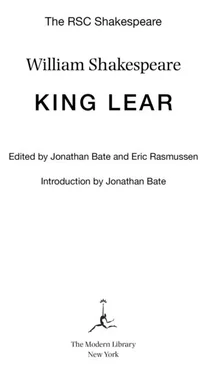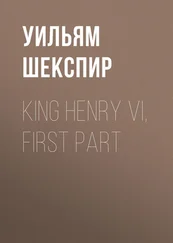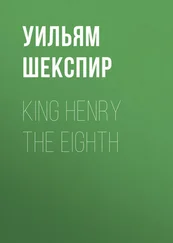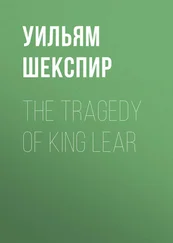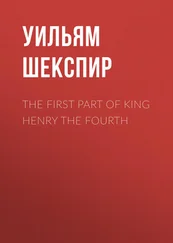уильям шекспир - King Lear
Здесь есть возможность читать онлайн «уильям шекспир - King Lear» весь текст электронной книги совершенно бесплатно (целиком полную версию без сокращений). В некоторых случаях можно слушать аудио, скачать через торрент в формате fb2 и присутствует краткое содержание. Год выпуска: 2011, ISBN: 2011, Издательство: Random House Publishing Group, Жанр: Старинная литература, на английском языке. Описание произведения, (предисловие) а так же отзывы посетителей доступны на портале библиотеки ЛибКат.
- Название:King Lear
- Автор:
- Издательство:Random House Publishing Group
- Жанр:
- Год:2011
- ISBN:978-1-58836-828-7
- Рейтинг книги:3 / 5. Голосов: 1
-
Избранное:Добавить в избранное
- Отзывы:
-
Ваша оценка:
- 60
- 1
- 2
- 3
- 4
- 5
King Lear: краткое содержание, описание и аннотация
Предлагаем к чтению аннотацию, описание, краткое содержание или предисловие (зависит от того, что написал сам автор книги «King Lear»). Если вы не нашли необходимую информацию о книге — напишите в комментариях, мы постараемся отыскать её.
King Lear — читать онлайн бесплатно полную книгу (весь текст) целиком
Ниже представлен текст книги, разбитый по страницам. Система сохранения места последней прочитанной страницы, позволяет с удобством читать онлайн бесплатно книгу «King Lear», без необходимости каждый раз заново искать на чём Вы остановились. Поставьте закладку, и сможете в любой момент перейти на страницу, на которой закончили чтение.
Интервал:
Закладка:
The social composition of the audience was mixed. The poet Sir John Davies wrote of “A thousand townsmen, gentlemen and whores, / Porters and servingmen” who would “together throng” at the public playhouses. Though moralists associated female play-going with adultery and the sex trade, many perfectly respectable citizens’ wives were regular attendees. Some, no doubt, resembled the modern groupie: a story attested in two different sources has one citizen’s wife making a postshow assignation with Richard Burbage and ending up in bed with Shakespeare—supposedly eliciting from the latter the quip that William the Conqueror was before Richard III. Defenders of theater liked to say that by witnessing the comeuppance of villains on the stage, audience members would repent of their own wrongdoings, but the reality is that most people went to the theater then, as they do now, for entertainment more than moral edification. Besides, it would be foolish to suppose that audiences behaved in a homogeneous way: a pamphlet of the 1630s tells of how two men went to see Pericles and one of them laughed while the other wept. Bishop John Hall complained that people went to church for the same reasons that they went to the theater: “for company, for custom, for recreation … to feed his eyes or his ears … or perhaps for sleep.”
Men-about-town and clever young lawyers went to be seen as much as to see. In the modern popular imagination, shaped not least by Shakespeare in Love and the opening sequence of Laurence Olivier’s Henry V film, the penny-paying groundlings stand in the yard hurling abuse or encouragement and hazelnuts or orange peel at the actors, while the sophisticates in the covered galleries appreciate Shakespeare’s soaring poetry. The reality was probably the other way round. A “groundling” was a kind of fish, so the nickname suggests the penny audience standing below the level of the stage and gazing in silent open-mouthed wonder at the spectacle unfolding above them. The more difficult audience members, who kept up a running commentary of clever remarks on the performance and who occasionally got into quarrels with players, were the gallants. Like Hollywood movies in modern times, Elizabethan and Jacobean plays exercised a powerful influence on the fashion and behavior of the young. John Marston mocks the lawyers who would open their lips, perhaps to court a girl, and out would “flow / Naught but pure Juliet and Romeo.”
THE ENSEMBLE AT WORK
In the absence of typewriters and photocopying machines, reading aloud would have been the means by which the company got to know a new play. The tradition of the playwright reading his complete script to the assembled company endured for generations. A copy would then have been taken to the Master of the Revels for licensing. The theater book-holder or prompter would then have copied the parts for distribution to the actors. A partbook consisted of the character’s lines, with each speech preceded by the last three or four words of the speech before, the so-called “cue.” These would have been taken away and studied or “conned.” During this period of learning the parts, an actor might have had some one-to-one instruction, perhaps from the dramatist, perhaps from a senior actor who had played the same part before, and, in the case of an apprentice, from his master. A high percentage of Desdemona’s lines occur in dialogue with Othello, of Lady Macbeth’s with Macbeth, Cleopatra’s with Antony, and Volumnia’s with Coriolanus. The roles would almost certainly have been taken by the apprentice of the lead actor, usually Burbage, who delivers the majority of the cues. Given that apprentices lodged with their masters, there would have been ample opportunity for personal instruction, which may be what made it possible for young men to play such demanding parts.
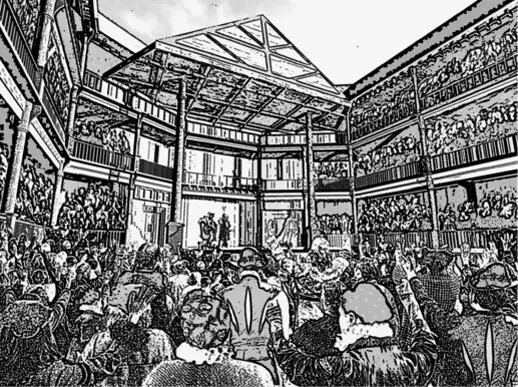
10. Hypothetical reconstruction of the interior of an Elizabethan playhouse during a performance.
After the parts were learned, there may have been no more than a single rehearsal before the first performance. With six different plays to be put on every week, there was no time for more. Actors, then, would go into a show with a very limited sense of the whole. The notion of a collective rehearsal process that is itself a process of discovery for the actors is wholly modern and would have been incomprehensible to Shakespeare and his original ensemble. Given the number of parts an actor had to hold in his memory, the forgetting of lines was probably more frequent than in the modern theater. The book-holder was on hand to prompt.
Backstage personnel included the property man, the tire-man who oversaw the costumes, call boys, attendants, and the musicians, who might play at various times from the main stage, the rooms above, and within the tiring-house. Scriptwriters sometimes made a nuisance of themselves backstage. There was often tension between the acting companies and the freelance playwrights from whom they purchased scripts: it was a smart move on the part of Shakespeare and the Lord Chamberlain’s Men to bring the writing process in-house.
Scenery was limited, though sometimes set pieces were brought on (a bank of flowers, a bed, the mouth of hell). The trapdoor from below, the gallery stage above, and the curtained discovery-space at the back allowed for an array of special effects: the rising of ghosts and apparitions, the descent of gods, dialogue between a character at a window and another at ground level, the revelation of a statue or a pair of lovers playing at chess. Ingenious use could be made of props, as with the ass’s head in A Midsummer Night’s Dream . In a theater that does not clutter the stage with the material paraphernalia of everyday life, those objects that are deployed may take on powerful symbolic weight, as when Shylock bears his weighing scales in one hand and knife in the other, thus becoming a parody of the figure of Justice who traditionally bears a sword and a balance. Among the more significant items in the property cupboard of Shakespeare’s company, there would have been a throne (the “chair of state”), joint stools, books, bottles, coins, purses, letters (which are brought onstage, read, or referred to on about eighty occasions in the complete works), maps, gloves, a set of stocks (in which Kent is put in King Lear ), rings, rapiers, daggers, broadswords, staves, pistols, masks and vizards, heads and skulls, torches and tapers and lanterns, which served to signal night scenes on the daylit stage, a buck’s head, an ass’s head, animal costumes. Live animals also put in appearances, most notably the dog Crab in The Two Gentlemen of Verona and possibly a young polar bear in The Winter’s Tale .
The costumes were the most important visual dimension of the play. Playwrights were paid between £2 and £6 per script, whereas Alleyn was not averse to paying £20 for “a black velvet cloak with sleeves embroidered all with silver and gold.” No matter the period of the play, actors always wore contemporary costume. The excitement for the audience came not from any impression of historical accuracy, but from the richness of the attire and perhaps the transgressive thrill of the knowledge that here were commoners like themselves strutting in the costumes of courtiers in effective defiance of the strict sumptuary laws whereby in real life people had to wear the clothes that befitted their social station.
To an even greater degree than props, costumes could carry symbolic importance. Racial characteristics could be suggested: a breastplate and helmet for a Roman soldier, a turban for a Turk, long robes for exotic characters such as Moors, a gabardine for a Jew. The figure of Time, as in The Winter’s Tale , would be equipped with hourglass, scythe, and wings; Rumour, who speaks the prologue of 2 Henry IV , wore a costume adorned with a thousand tongues. The wardrobe in the tiring-house of the Globe would have contained much of the same stock as that of rival manager Philip Henslowe at the Rose: green gowns for outlaws and foresters, black for melancholy men such as Jaques and people in mourning such as the Countess in All’s Well That Ends Well (at the beginning of Hamlet , the prince is still in mourning black when everyone else is in festive garb for the wedding of the new king), a gown and hood for a friar (or a feigned friar like the duke in Measure for Measure ), blue coats and tawny to distinguish the followers of rival factions, a leather apron and ruler for a carpenter (as in the opening scene of Julius Caesar —and in A Midsummer Night’s Dream , where this is the only sign that Peter Quince is a carpenter), a cockle hat with staff and a pair of sandals for a pilgrim or palmer (the disguise assumed by Helen in All’s Well ), bodices and kirtles with farthingales beneath for the boys who are to be dressed as girls. A gender switch such as that of Rosalind or Jessica seems to have taken between fifty and eighty lines of dialogue—Viola does not resume her “maiden weeds” but remains in her boy’s costume to the end of Twelfth Night because a change would have slowed down the action at just the moment it was speeding to a climax. Henslowe’s inventory also included “a robe for to go invisible”: Oberon, Puck, and Ariel must have had something similar.
Читать дальшеИнтервал:
Закладка:
Похожие книги на «King Lear»
Представляем Вашему вниманию похожие книги на «King Lear» списком для выбора. Мы отобрали схожую по названию и смыслу литературу в надежде предоставить читателям больше вариантов отыскать новые, интересные, ещё непрочитанные произведения.
Обсуждение, отзывы о книге «King Lear» и просто собственные мнения читателей. Оставьте ваши комментарии, напишите, что Вы думаете о произведении, его смысле или главных героях. Укажите что конкретно понравилось, а что нет, и почему Вы так считаете.
